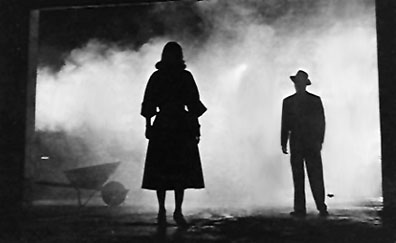
Episodes of Fact in Fiction: The Man with the Golden Gun
In the Autumn of 1961, a highly trained KGB agent, Bogdan Stashinsky, defected to West Germany. His family supported the Anti-soviet Ukrainian Insurgent Army (UPA) in their struggle for independence from Russian Communism.
Bogdan (aged 19) was arrested by the railway police for travelling on a train without a ticket. Because of his family’s anti- soviet activities, the matter came to the attention of the KGB. A few weeks after the incident, he was interviewed by an officer of the Russian secret police, who proposed a deal: work for the KGB or his entire family would be arrested and sent to the Gulag. The 19 yr old boy realised he had little choice but accept.
After his training in the hands of the KGB, he was earmarked for an important undercover assignment in West Germany. Once settled in Munich his soviet handler told him the details. He was to assassinate Stephan Bandera, the charismatic leader of the Ukrainian nationalists living in exile. To do this he was supplied with a special gun, which fired liquid cyanide, killing its victim instantly and leaving no trace. The mission was carried out successfully. The subsequent autopsy conducted by the West German authorities recorded death from a heart attack.
Over the next three years, more assassinations followed. But the émigré community in Munich, together with CIA agents in the west, were becoming convinced of Stashinsky’s treachery and despite the praise and decorations showered on him by his KGB bosses, Stashinsky began to suffer from depression and a bad conscience. The stress of living under false names and the need for constant vigilance were taking their toll.
In the spring of 1960, Stashinsky ( living under a false name ) fell in love with Inge Pohl, an East German, born in Spandau (1936). She had experienced all the horrors of the Russian occupation of Berlin after the Second World War and had no idea of Stashinsky’s true occupation. So when, in May 1960, he asked her to marry him, she accepted – still not knowing his real name or occupation.
Stashinsky’s decision to marry horrified his KGB controllers, who did everything possible to persuade him to change his mind – particularly as they had arranged a year’s training in Moscow prior to him being infiltrated into America to carry out more assassinations. Gradually, he told Inge Pohl the full story. Reluctantly she agreed to marry him and live in Moscow during his training. Together husband and wife devised a plan for them both to defect to the West German authorities. Anyone who has seen the German spy series “Deutschland 83” will recognise a number of similarities to Stashinsky’s tale, albeit that story is set several decades later. And more specifically, the Stashinsky story inspired Ian Fleming’s last James Bond novel, “The man with the Golden Gun”. In the novel, Bond, brain washed by the KGB tries to assassinate “M” by shooting him with a cyanide pistol. The ultimate fate of the prize Russian assassin remains uncertain.
Back in reality, once in West Germany Stashinsky was arrested and sentenced to 8 years imprisonment for the murder of Stephan Banders. He served only a third of his sentence, however, before being released and handed over to the CIA. He then had extensive plastic surgery, was given a new identity and served the Americans in South America and South Africa.